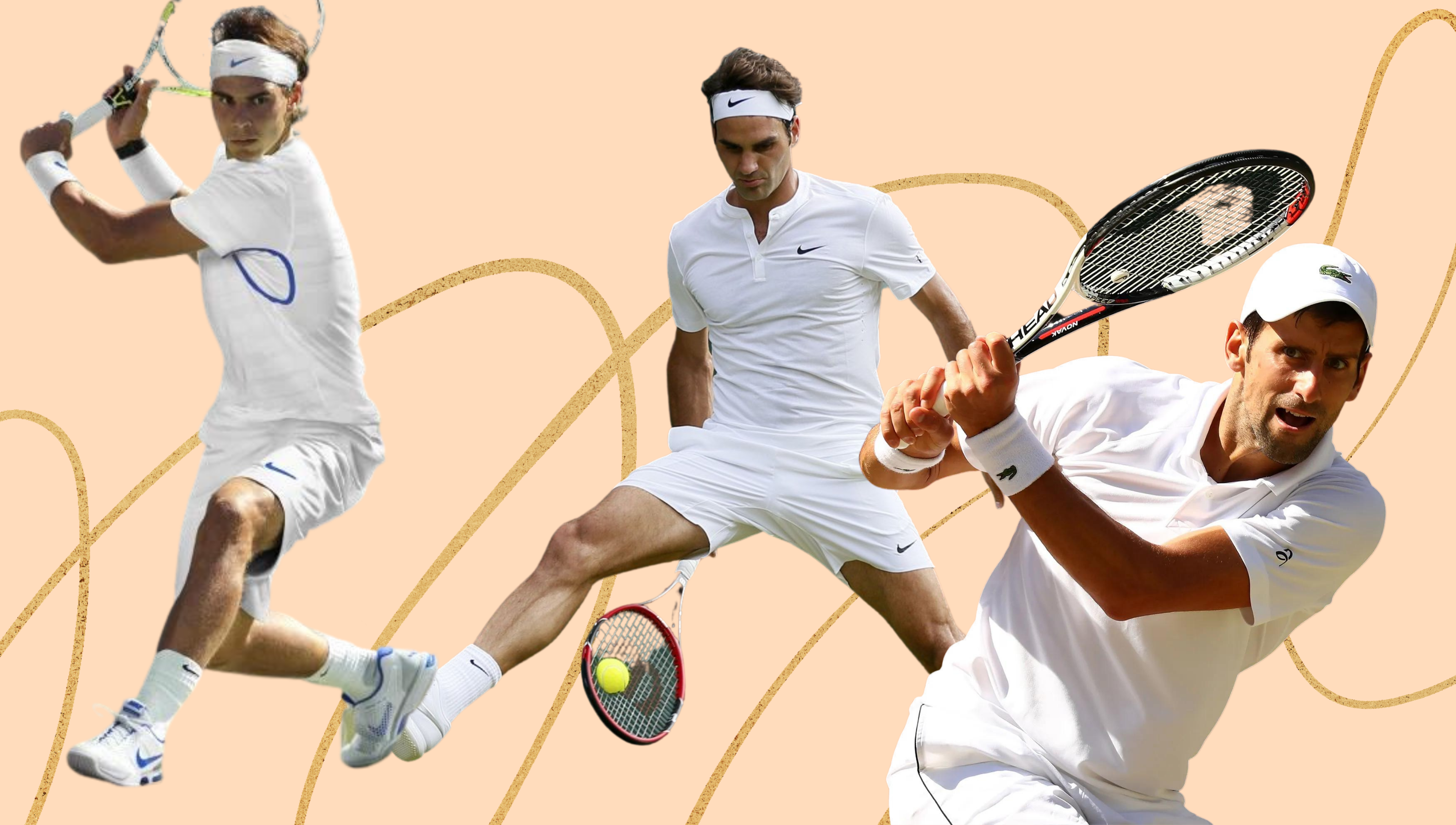What Roger Federer, Rafael Nadal, and Novak Djokovic are still doing—jockeying with each other and only each other for position at the absolute pinnacle of men’s tennis—is unfathomable in 2021. Yet, unless you’re a bona fide fan of tennis, which most in the general sports community are not, you probably haven’t noticed.
The Greatest Of All Time moniker is thrown around the sports community loosely enough that I can’t help but feel the Big Three’s claims to that title deserve much more additional context than I’ll be able to give them. But here’s a jumping off point: major tournaments in men’s tennis and PGA Tour golf have historically had a similar level of parity at the top. Golf is led by Jack Nicklaus with 18 majors, Tiger Woods with 15, and then a host of players between 11 and seven. Meanwhile, before the Big Three, men’s tennis had Pete Sampras with 14 Grand Slams, Roy Emerson with 12, and then a group just below them.
Somehow, though, Federer, Nadal, and Djokovic have all raced past Sampras’s old record—Federer has 20 majors, Nadal is level with him, and the Djoker is just behind with 18.
With a devastating combination of relentlessness and transcendent talent, the Big Three have fashioned an oligopoly out of a sport that we previously considered a democracy. The idea of golf and tennis being similarly balanced was a statistical fact at the turn of the century. Now, it’s a comical idea. Golf’s three winningest major players in the last 15 years—Woods, Rory McIlroy, and Brooks Koepka—have combined for 13 majors out of a possible 60. The LPGA Tour, which has recognized five major tournaments since 2013, has had a total of 40 majors in that time frame, which have been most often by Inbee Park (7) and Yani Tseng (5). In women’s tennis, Serena Williams has won 16 out of a possible 60 Grand Slams since 2006, while Naomi Osaka has been her next closest challenger, with four.
In that timeframe, Federer, Nadal, and Djokovic have combined to win—wait for it—51 out of a possible 60 Grand Slams.
It’s difficult to even contrive comparable hypotheticals. It’s as if, when Tiger was ripping through the PGA Tour in the early 2000s, every major he didn’t win was automatically sucked up by another Jack Nicklaus-type just as good as him. Take that period, and then extend it another decade. Or if Jordan, LeBron, and a third player—say, Wilt Chamberlain—all entered the NBA around the same time on different teams. Would those three teams combine to win 14 championships in 15 years? It’s possible, but there has never been a 21st century run in professional team sports even approaching that type of prolonged dominance. There has always been another challenger, there has always been a key injury or a strategic error that prevented such unanimity. But none of those rules have applied to the Big Three.
The scary alternative to consider is if Djokovic had never come along, because Novak was the party crasher after a period of Nadal and Federer laying waste to Grand Slam tournaments in the late 2000s. Rafa has always ruled the clay surfaces of the French Open—13 of his 20 Grand Slams have come in Paris. But since 2011, when Djokovic really started humming, Federer has captured “only” four of his 20 total Grand Slams despite almost always being ranked among the world’s three best players. Federer has fallen at the hands of the Serbian mental giant Djokovic in three majors in which he had multiple match point opportunities to capture the victory—the 2010 and 2011 U.S. Open semifinals and the 2019 Wimbledon final. Overall, Djokovic has bested Federer by an 11-6 scoreline when squaring off in Grand Slam tournaments, with 16 of those 17 matches coming in the tournament semifinals or finals (Nadal leads Djokovic 10-6 in Grand Slam matchups). Put simply, if Djokovic hadn’t stood in his way, we can estimate Federer would have at least six or seven more Grand Slam titles. Nadal, probably three or four more. At that point, Federer and Nadal could probably both make a heck of a case as the greatest individual athlete of all time—they’d perhaps have more Grand Slams than anyone (Margaret Court is the all-time leader with 24) while going toe-to-toe with an archnemesis every bit their equal. Could you imagine a world where a duopoly is so simultaneously dominant that they could be considered the two best individual athletes ever while playing the same game in the same era?
Yes, these are the superlatives we have to use when walking into the Big Three’s kingdom. Americans, despite being consumers whom we’ve always considered so enamored with sports greatness, have largely passed on watching. Tennis is not a sport with a particularly rabid following in the States, so its ratings will always be dwarfed by the likes of the NFL. But golf again seems a fair benchmark, and the PGA Tour major Sundays always outdo men’s tennis finals, sometimes by a multiple of four to one. Within the sport, the U.S. Open is the only tennis major where the women’s tournament sees higher ratings than the men’s. The reason seems obvious and a function of our national ego—the women’s game has American stars, including, of course, Serena Williams. Just like we love football because it’s our gift to the world, we change the channel when we don’t have a star-spangled horse in the race.
That’s not the end of it, because part of what’s so interesting about Federer, Nadal, and Djokovic is that there’s almost nothing about the Big Three that we Yankees associate with. Sure, Federer and Nadal have Nike sponsorships, but Fed is a consummate Swiss with the mild-mannered nature to match and an elegant play style reminiscent of London’s Wimbledon. Nadal is overflowing with that Iberian flair and has made Paris a home away from home on the Grand Slam circuit. And then there’s Djokovic, who’s deathly serious about making his droves of Balkan fans proud and could probably be elected president of Serbia tomorrow. The trio of personalities are compelling all the same, but they’ve never been ours.
The Big Three’s run will come to an end. There’s no point in approximating a date on when that will happen because we have spent the last few years waiting for such a moment and all Federer, Nadal, and Djokovic have done in return is win and win some more. Nowadays, Federer is 39, Nadal is 34, and Djokovic is 33—ages at which the tennis greats of yesteryear would have been, at best, long past their major-winning days. Yet these three insatiable forces charge on, and though it’s taken me too long to realize this, I need to tune in before it’s all over.





